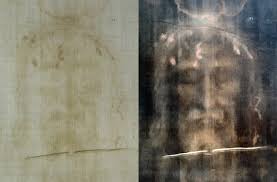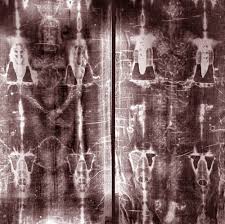We asked ChatGPT to thoroughly list the scientific reasons why the Shroud of Turin is valid–the authentic burial cloth of Jesus–and this is what (quite capably!) it came up with:
🔬 IMAGE FORMATION
-
Superficiality of the Image
-
The image only penetrates the topmost fibrils of the linen—less than 1/100 of a human hair deep—without staining or soaking into the fabric.
-
-
No Pigments, Dyes, or Paint
-
Spectral and chemical analysis (e.g., by STURP in 1978) found no evidence of artistic substances such as pigments or binders responsible for the image.
-
-
Photographic Negative Quality
-
The image is a negative, meaning when photographed, the positive image appears more lifelike and detailed, like a photo. This was discovered in 1898 by Secondo Pia and remains unique in relics or art.
-
-
Three-Dimensional Encoding
-
The intensity of the image correlates with distance from the cloth to the body, allowing 3D modeling using image analysis. No known painting or natural imprint can replicate this effect.
-
-
No Directionality
-
The image shows no brush strokes, pressure marks, or directionality typical of art or imprinting—yet it retains consistent high-resolution anatomical detail.
-
-
Uniformity and Clarity Despite Wrinkles
-
The image maintains anatomical proportionality even where the cloth would have naturally wrinkled around the body—implying it was projected or formed without physical contact.
-
-
Lack of Decomposition Odor or Fluids
-
No signs of bodily decomposition are present, although the Gospels say Jesus was buried without full embalming due to Sabbath timing.
-
-
Absence of Capillary Action
-
Real contact with a bloody body would cause fluid diffusion into the fabric. The bloodstains show no evidence of wicking, diffusion, or matting, suggesting they were transferred in a different, possibly instantaneous way.
-
🩸 BLOOD & WOUNDS
-
Real Human Blood
-
Tests have confirmed the stains are real type AB human blood with high levels of bilirubin, consistent with trauma and torture (as would occur during crucifixion).
-
-
Blood Appears Before the Image
-
Microscopic studies show blood was on the cloth before the body image was formed—contradicting the idea of a painted composite.
-
Perfect Anatomical Placement
-
Bloodstains match anatomically accurate positions of wounds described in crucifixion (e.g., wrist nails, crown of thorns, side wound, scourge marks), with forensic consistency.
-
Scourging Pattern
-
Over 120 scourge wounds on the body, visible in double-marked “dumbbell” shapes, perfectly match a Roman flagrum used in the 1st century.
-
Pollen & Soil Evidence
-
Pollen grains and dust unique to the Jerusalem area, including near a limestone tomb, are embedded in the cloth—suggesting origin in that region.

🧪 MATERIALS AND AGE
-
Flax and Weaving Pattern
-
The 3:1 herringbone twill is complex and expensive, fitting Jewish burial customs of the wealthy in the 1st century (like Joseph of Arimathea).
-
Lack of Known Artistic Precedent
-
No known medieval or ancient technique can replicate all properties of the image, especially the photographic negative and 3D characteristics.
-
Carbon-14 Dating Controversy
-
The 1988 dating to 1260–1390 is contested:
-
Contamination and handling may have skewed the sample.
-
The tested area may have included restoration fibers from medieval repairs (known as the “invisible reweave” theory).
-
Chemical and spectral analyses (Ray Rogers, 2005) show differences in composition between the sample area and the main cloth.
-
✝️ THEOLOGICAL AND SYMBOLIC
-
Congruence with Gospel Accounts
-
The image reflects the exact physical sufferings of Jesus as described in the Passion narratives, down to wound locations and burial posture.
-
Possible Evidence of Resurrection
-
Believers posit that the image was created by a burst of radiant energy (perhaps ultraviolet light or proton radiation) at the moment of resurrection—a theory no scientific model has been able to reproduce or disprove.
-
Absence of Body Distortion
-
If the body had decayed inside the cloth, the image would show signs of bloating or collapse. Instead, the form remains anatomically “lifted” or suspended, consistent with a body disappearing rather than decomposing.
-
Enduring Mystery Despite Modern Tech
-
After decades of study by physicists, chemists, biologists, and historians—including NASA-level imaging tools—no comprehensive natural explanation has been universally accepted.

🧠 Summary
The Shroud of Turin bears miraculous evidence of:
-
Jesus’s physical passion, death, and burial
-
An image created by unknown, possibly divine means
-
A physical witness to the Resurrection, encoded in linen
The fact that modern science cannot fully explain how the image was created, how the blood appears pre-image, and how so many historically and anatomically accurate details align, leads many to conclude it is authentic and supernatural in origin.
